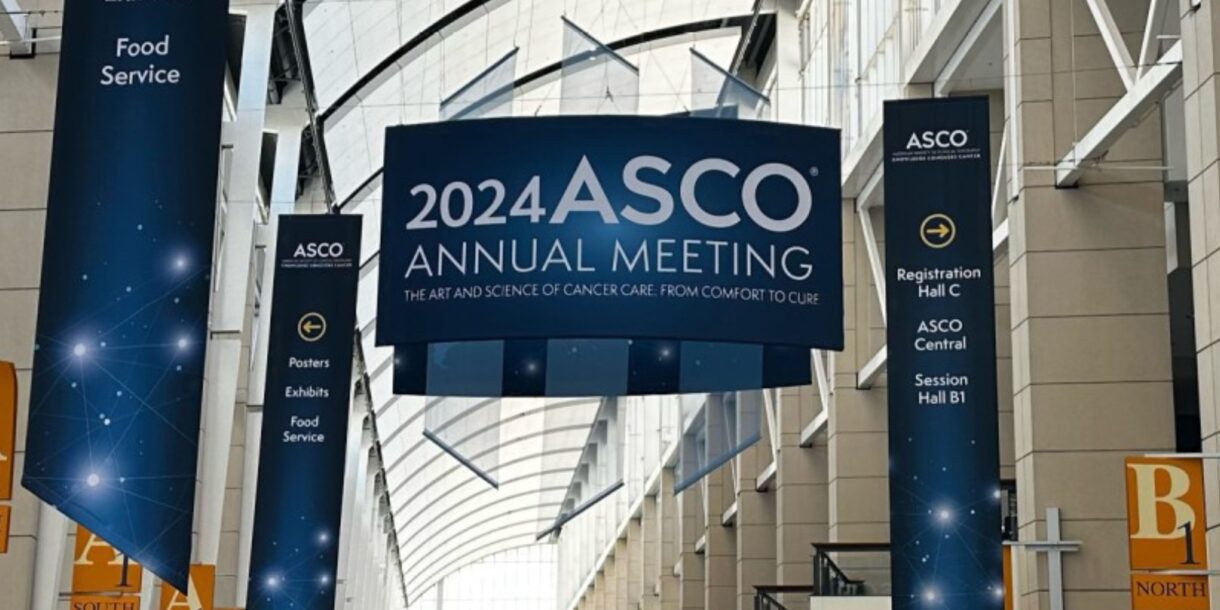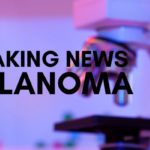
By Kim Margolin, M.D., FACP, FASCO
The American Society of Clinical Oncology or ASCO is a professional organization that hosts a series of meetings about different types of cancers and other professional development opportunities. They also hold a large annual meeting in June every year at which U.S. and foreign oncologists and other oncology-related medical professionals from around the world gather to hear the latest news in their specialties (such as melanoma) and in cancer generally. More than 40,000 people, including ASCO members, researchers and those who care for people with cancer, attend this meeting held annually in Chicago.
This year’s ASCO was an exciting meeting that lifted spirits and raised survival curves to new heights in melanoma and several other malignancies. This year was the first year that melanoma appeared on the plenary session (the session that 40,000 people attend in person) since 2015, when we first heard about the highly-active combination of ipilimumab (anti-CTLA-4) and nivolumab (anti-PD-1) for advanced melanoma. At that time, four years had passed since the twin breakthroughs of BRAF mutation-targeted therapy and the original immune checkpoint antibody, ipilimumab. Of course, we also know now that immune checkpoint antibodies have caused an explosion in the success of immunotherapy; consequently, the 2018 Nobel Prize in Medicine was awarded to Drs. James Allison and Tasuku Honjo for these discoveries and the resulting therapies.
Below is a summary of new developments reported at ASCO in 2024.
Brief points about the NADINA trial, a paradigm shift in the timing of systemic therapy for melanoma
Now, in 2024, the first randomized, phase III study (NADINA) has demonstrated a major advantage for giving patients with a bulky melanoma mass (usually a large node or cluster of nodes containing melanoma) a brief course of immunotherapy prior to surgical removal. The most exciting result was the incredibly high rate of pathologic complete eradication of all living melanoma cells, leading to a long term remission and eliminating the need for further surgery or more systemic treatment. Further details of this practice-changing report of the NADINA trial, led by investigators in the Netherlands and Australia, are covered in the accompanying article by Mandi Murph, AIM at Melanoma’s Director of Medical Education.
Tumor-infiltrating lymphocyte therapy—current state of the art
First, we heard updates on tumor-infiltrating lymphocyte (“TIL”) therapy, which was detailed in a recent issue of IPE and recently approved by the FDA for commercial use (that is, no longer requiring the participation in a clinical trial but still having very strict patient selection criteria and operational requirements in order to assure maximum safety and optimal patient outcome). The FDA approval requires that patients first be treated with standard immunotherapy such as pembrolizumab or nivolumab-containing regimens and, if the melanoma has a BRAF mutation, also to have received one of the targeted therapy regimens against BRAF and MEK (detailed in this IPE article). Earlier use of TIL cell therapy (before current-day immunotherapy or targeted therapy were available) showed favorable results from the National Cancer Institute (NCI), and a similar trial, in which several institutions collaborated outside of the NCI, was presented at ASCO 2024, where similar favorable results were reported. The FDA approval of TIL cell therapy is currently an accelerated approval, which means that the data remain preliminary and require confirmation with a randomized trial to get full FDA approval. In order to obtain more data in earlier phases of melanoma and to obtain this full approval by the FDA, the company that produces TIL cells (Iovance) has initiated a trial for patients who have never received treatment for advanced melanoma. Patients will be randomly assigned to receive pembrolizumab with or without TIL cells as their first therapy. Patients randomized to pembrolizumab alone who do not go into remission or who go into remission but later relapse may go on to TIL cell therapy for their relapse. Thus, the trial could be construed as being a comparison of early TIL versus later TIL rather than TIL versus no TIL.
Tumor-infiltrating lymphocyte (“TIL”) therapy—developing better and safer approaches
Among the remaining questions and challenges about TIL cell therapy for melanoma are the possibility of eliminating the initial high-dose chemotherapy and/or reducing or replacing the high-dose interleukin-2 (IL-2)—which can be very toxic and require specialized medical management—after administration of TIL cells. The purpose of the high-dose interleukin (IL-2) is to act as a T cell growth factor that stimulates the proliferation of the administered TILs as well as activating them to enhance tumor cell killing. There is now an engineered form of TIL that carries its own T cell growth factor (IL-15) that can be turned on by treating the patient with acetazolamide, a safe oral medication ordinarily used to reduce altitude sickness. The IL-15 is less toxic than IL-2 and may be a solution, but it is still being tested. Another form of engineered TIL cell being tested in melanoma and other malignancies uses the CRISPR approach to remove PD-1 from the TIL cells, thus making them better tumor cell killers while avoiding their attack on other tissues of the body. The latter approach is the newest of “personalized” therapies developed to improve the therapeutic index of a particular treatment, representing the relative balance of benefits versus risks or toxicities.
Updates on non-TIL therapies—double immune checkpoint blockade targeting LAG-3 and PD-1
Despite the promise of TIL cell therapy, it is complex, potentially dangerous, exorbitantly expensive, and simply not available to a large fraction of the patients who do not benefit from other treatments for advanced melanoma. Thus, investigators continue to work on simpler, more widely-available treatments for patients with the most favorable forms of metastatic melanoma—those that arise in skin over the trunk, extremities, and head and neck areas—who haven’t been fortunate enough to go into remission and stay in remission. Some of these treatments are also being tested in first-line therapy for patients with the less favorable forms of melanoma that go into remission much less frequently, including those that arise in the palms, soles, fingernails and toenails as well as those that arise in the moist membranes of the body such as the mouth or nose and the anogenital areas. One approved treatment contains two immune checkpoint antibodies, relatlimab and nivolumab in a combined formulation called Opdualag, which can provide a rate of remission about halfway between that of simple nivolumab or pembrolizumab and the more effective—but more toxic—combination of ipilimumab and nivolumab. Similar antibodies from different companies are undergoing testing in several clinical settings, which may eventually define their role in patients with melanoma.
Intratumoral immunotherapy using viruses to deliver signals to the immune system
Other treatments are being tested in patients with one or only a few localized, injectable sites of melanoma metastases that can be injected with substances that cause intense inflammation that triggers a strong local immune response. The latest of these agents is a genetically-altered form of inactivated Herpes virus similar to the approved agent, TVEC, which has modest antitumor effects at the sites of injected tumors but little activity in distant sites of tumor that have not been injected. Further investigation will demonstrate the possibility that this newer virus, engineered to enhance its ability to alter the immune system’s recognition of tumor cells, is superior to TVEC and whether its antitumor effects will far outweigh any toxicities it may cause. Research also continues on the use of cytokines (molecules that are produced by one type of immune cell and send signals to another kind of immune cell), most recently in engineered forms, to enhance the immune system’s eradication of malignant cells.
Development and testing of personalized cancer vaccines for melanoma
Cancer vaccine research began in melanoma but suffered a long series of failed strategies. However, beginning in 2024, a complex but rational approach is finally being successfully applied to melanoma therapy. At this year’s ASCO, we heard about the updated results of a preliminary study of a personalized melanoma vaccine produced using similar techniques to that of the highly-effective Moderna mRNA vaccine against severe Covid infection. Melanoma is caused in part by genetic damage from the ultraviolet rays of the sun, which in turn leads to altered mRNA and proteins. Fragments of these abnormal proteins can be recognized by immune cells in a way that stimulates killing of the melanoma cells displaying these fragments on their surface. Thus, a so-called personalized or patient-specific vaccine can be produced from tiny amounts of patient melanoma tissue that can be obtained from needle biopsies or small surgical biopsies of the melanoma. This form of melanoma vaccine has shown great promise when used as a post-surgical adjuvant regimen in combination with pembrolizumab (one year of therapy), compared with pembrolizumab alone; ongoing studies are designed to validate the promise of this preliminary adjuvant therapy study and to obtain data regarding the power of this form of personalized cancer vaccine for patients with recurrent melanoma.
Bispecific or bifunctional structures in treatment of melanoma
Melanoma will not be the first disease in which to witness successful engineering of therapeutic molecules to make structures that can be used to link two important elements together for enhanced tumor killing. However, melanoma may well be one of the next few diseases where this approach can be applied successfully. The newest molecule to be ready for testing is created from the linkage of the antigen PRAME with an activating antibody that binds to and stimulates CD3, an important signaling molecule on killer T cells. The result of this linkage of structure with function and tumor location is to bring a T lymphocyte into contact with an antigen that it would not normally recognize and to enhance its likelihood of attacking tumor cells expressing that antigen. Such approaches have already shown activity in other tumor types: a form of leukemia that is highly lethal is now treated routinely by the FDA-approved double-function drug blinatumomab, and the uveal form of melanoma, which is highly resistant to other forms of immunotherapy, appears to be controlled for prolonged periods by another FDA-approved double-function drug (tebentafusp) that links the melanoma antigen gp-100 with the anti-CD3 stimulating antibody described above.
All told, 2024 is turning out to be a banner year for big therapeutic advances in melanoma. With the explosive growth of knowledge about how melanoma is wired and how its surrounding immune environment can be understood and manipulated, the possibilities are now realistic for eradicating much more of the suffering and death from this disease in the foreseeable future.
Questions on this article may be submitted to Alicia@AIMatMelanoma.org

Dr. Margolin is a Medical Director of the SJCI Melanoma Program, St. John’s Cancer Institute. She worked at City of Hope for 30 years and also held faculty positions at the Seattle Cancer Care Alliance/University of Washington and at Stanford University. Among her academic achievements were long-term leadership of the Cytokine Working Group, leadership involvement in the Cancer Immunotherapy Trials Network, participation in the Southwest Oncology Group’s Melanoma Committee, and many positions in the American Society of Clinical Oncology and the Society for Immunotherapy of Cancer. Dr. Margolin has reviewed grants for many cancer-related nonprofit organizations and governmental agencies. She has also served as a member of the Oncology Drugs Advisory Committee to the FDA, the American Board of Internal Medicine’s Medical Oncology certification committee, and the Scientific Advisory Committee of the European Organization for the Research and Treatment of Cancer.
Dr. Margolin collaborates with AIM at Melanoma to write our In Plain English articles to provide timely updates on new developments for patients, caregivers, and other individuals with an interest in medical advances in melanoma.
Recent Posts

Summary of Neoadjuvant Nivolumab and Ipilimumab in Resectable Stage III Melanoma

In Plain English: Overview of the 2024 Annual Meeting of the American Society of Clinical Oncology (ASCO)

Stories of Strength: Three Melanoma Survivors Who Inspire Us All

World Health Organization Predicts Half a Million With Melanoma in 2040

